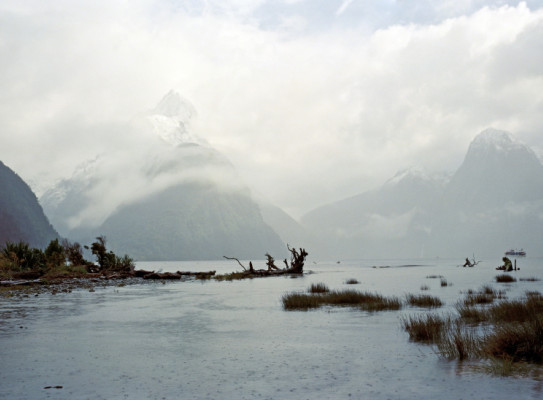New Zealand Fjord Sediment Records - Potential carbon sinksNatural carbon sequestration in our southern fjords

Fiordland is likely one of Aotearoa New Zealand’s largest carbon sinks, but its storage capacity is under threat with potentially significant consequences.
Overview
Fjords are critical in the global carbon cycle, burying the largest amount of organic carbon per unit area in the world. They represent carbon cycle hotspots for “blue carbon”. This makes them a crucial ecosystem for regulating climate.
Fiordland’s carbon storage capacity is threatened by climate change and by our catchment management practices. This could expose us to potential for significant economic and environmental consequences.
The University of Otago and GNS Science lead this project in a collaborative effort between Ngāi Tahu, Fiordland Marine Guardians and a team of New Zealand and international scientists.
This project aims to
- Conduct the first-ever deep analysis of fjords’ ability to hold carbon, from its source to distribution
- Understand the size, variability and how climate change and management decisions influence carbon sinks
To achieve these aims, our objective is to
- Spend five years collecting mud, sampling water and collecting other measurements from different fjords in the region
The project
How sensitive is Fiordland?
There are two critical questions to be answered:
- How sensitive is Fiordland’s carbon sink to changing freshwater inputs from electricity generation and climate change?
- What happens when we cross crucial tipping points?
We don’t know what the crucial tipping points are, like when freshwater inputs change enough to dramatically change carbon sequestration into the fjords. We do know that, once crossed, we will see a dramatic reduction in the efficiency of carbon sequestration, leaving more carbon dioxide in the atmosphere and increasing the rate of global warming.
Until we answer those questions, we can’t:
- Put effective environmental management strategies in place
- Determine how the system will respond to future climate change
- Determine how variability in introduced freshwater threatens carbon loss in Doubtful Sound, as more pressure is placed on the Manapōuri Power Station to meet 100% renewable electricity goals
What we do know
Fiordland is like a giant sponge when it comes to absorbing carbon. Scientists estimate around 18 million tonnes of organic carbon is buried in fjords around the world each year. This is what makes them “hotspots” for carbon sequestration.
Research Project Details
Collaborators: University of Otago
Duration
2021 – 2026
Funding platform
Endeavour Fund
Status
Starting 2021
Programme leaders
Christopher Moy
Gary Wilson
Funder
Ministry of Business, Innovation and Employment (MBIE)